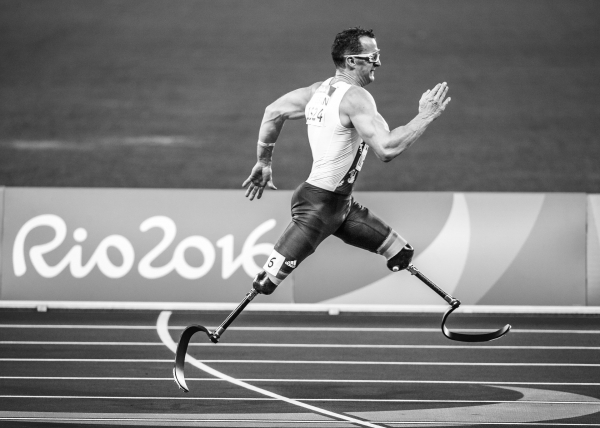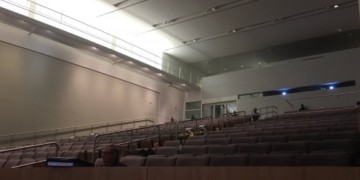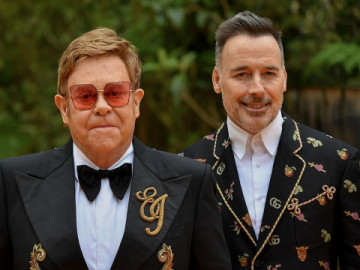Radically redefining what it means to be disabled in the age of enhancement and augmentation.

Needs will almost always come before wants. When it comes to Transhumanism, the ability to differentiate the two tends to blur, because a need could also be a want depending on the various methods of achieving a need. There’s the “getting by” need and then there’s the “thriving” need.
For the disabled, this dichotomy determines how well they’ll get by in life. If someone loses a leg, then simply getting by could be achieved with a cane, a walker, or even a low-tech prosthetic. However, if this person wishes to thrive in life, then a high-tech prosthetic would be much more preferable, though could also be considered a want rather than a need.
For Transhumanism to work, however, I’d argue that the ability to thrive should be considered an absolute necessity. Thus when it comes to the disabled, I believe they deserve the ability to reach post-humanity before anyone else. In all actuality, this is already happening.
Ironically, we get by fairly well with our five senses. I say “ironically” because, as Transhumanists, we also tend to look at our five senses and see them as quite limiting and desire more. For the disabled though, the loss of just one of those senses, which also tends to go along with losing a limb (though not all the time, I might add), is equivalent to losing an ability to interact with the world — despite how biologically limiting the lost sense might’ve been to begin with. So when they sign up to become a science experiment and start up a colloquy over which method is best for their first approach, they’re usually stuck with a “getting by” device, which at least allows them to reattach themselves to the very interaction they were unfortunately neglected from.
Today, however, is a much different story. With the advances in stem-cell research, 3D printing, data processing, etc., we’re able to provide a cheaper and much more efficient means of reattaching the disabled with the very interaction they lost.
Sight
Whenever someone had lost their sight, that was basically it; there was nothing else that could be done. The prospect of seeing again was mere fantasy, leaving people to make do with what they have — walking sticks being the most popular means of getting by.
To this day, according to the World Health Organization (WHO), an estimation of up to 285 million people worldwide are visually impaired, from total blindness to low vision. Thankfully, however, the WHO also notes that around 80% of all visual impairment can be either avoided altogether or cured.
80% is great, but I believe we can do much better than that as we continue advancing technologically.
A unique means of getting by this impairment has been achieved over the last few years. In 2013, a medical company known as Second Sight revealed that their Argus II retinal implant had been approved for medical use in the United States. This implant contains 60 electrodes, which allows people to make out the outlining of objects and even blurry recognition. The patient would have to wear a pair of glasses that is connected to their retina. Last year, the company announced positive data results after a five-year study.
I consider the Argus II retinal implant to be a “getting by” need. It’s most certainly a step forward from the walking cane, but it also doesn’t ensure complete visual sight. Nonetheless, that isn’t stopping Second Sight. According to the company, they’re already in the process of developing the Argus III, which will contain 240 electrodes, in comparison to the Argus II’s 60 electrodes — it’ll be 4x more powerful! Their long-term goal, however, is the enhanced ability to see better than those with 20/20 vision.
Certainly, the long-term vision of Second Sight merits the title of being a “thriving” need. But then, are there any current examples of a “thriving” need today?
One of the most interesting examples would be British cyborg Neil Harbisson, who isn’t totally blind, but suffers from a disorder known as achromatopsia which allows him to see only in black and white. To counter this limitation he wears what is known as an eyeborg — a head-mounted color sensor which picks up color frequencies and translates them into audio frequencies. Yes, Mr. Harbisson is able to hear color!
Not only is Mr. Harbisson able to balance out his limitation, but he’s also able to transcend his limitation! This results in an enhanced visualization of the world around him that no one else is able to see — yet. A couple of years ago, a group of biohackers had successfully achieved night vision by augmenting human sight with the use of porphyropsin, the protein complex which grants infrared vision to freshwater fish.
Touch
Another common loss among the disabled is the loss of limbs. With it comes the loss of ever being able to touch or feel other objects, people, etc. again. The reason for this loss varies among different situations, from birth defects to war disasters. An example of this would be the Boston Marathon bombing, which resulted in several people having to be rushed to the hospital and have their limbs amputated.
As noted above, I do not consider a cane, a walker, nor a low-tech prosthetic as being a sufficient “thriving” need, but rather simply a “getting by” need. The people who lost their limbs because of the Boston Marathon bombing were once runners — they thrived from the sensation of being able to feel the ground below their feet as they ran faster and faster and faster. A cane will not give this back to them; a walker will not give this back to them; a low-tech prosthetic will not give this back to them.
The same applies to those people who lost their arms or hands for whatever reason. For those of us who have hands, we’re not able to fully grasp (pun not intended) the importance of feeling other objects. We simply pick up other objects, whether they be small or large, and instantly collect all the necessary data needed to ensure nothing wrong occurs as a result. When we pick up fruit, we’re not squeezing too hard to the point of squishing it everywhere. When we pick up furniture, not only are we able to then determine how much strength is needed, but we’re also able to benefit from the simple pleasures of feeling its texture, perhaps certain ridges that may or may not affect your ability to pick up said object.
There are already really cool prosthetic arms commercially available. One of the coolest ones, in my opinion, would be the Bebionic3, which has been popularized by many of its users, one most notably being Nigel Ackland. Its abilities are vast and nearly simulates the movements of a normal hand — alongside other abilities in which normal hands wouldn’t be able to accomplish, like twisting the entire hand a full 360°.
I would definitely consider the Bebionic3 prosthetic arm to be closer to a “thriving” need than a “getting by” need, seeing as how it’s capable of using its sensors to detect muscle control, thus providing a much more relaxed and controlling feel for the patient. But then it still doesn’t provide the actual sensation of touch. With enough practice, Mr. Ackland’s been able to determine how hard to squeeze or pinch for certain tasks, but he doesn’t actually feel the objects he touches, unfortunately.
But things are about to change for the prosthetic world. Last year, Ohio-based amputee Melissa Loomis worked with DARPA and Johns Hopkins University under their co-project Modular Prosthetic Limb to revolutionize prosthetic limbs. Not only was she able to control a robotic arm using her mind alone — a result of the growing field of neuroprosthetics — with over 100 contact and temperature sensors connected to the arm, and electrodes attached to each of her nerve endings, Melissa is now “able to feel sensation and temperature feedback through each individual digit.”
As we move even closer to the world of “sci-fi,” biohacker company Grindhouse Wetware are known for their enhancements of touch, among other really cool enhancements. In particular, they’re in the business of popularizing finger magnet implants. What these implants do is allow people to feel the shape of electromagnetic current that surrounds them — a sixth sense, per se.
Sound
As already mentioned, one of my favorite examples of a “thriving” need would be Neil Harbisson’s eyeborg, which allows him to literally hear sounds. But then this enhancement was done so to balance out his visual impairment, not any cochlear impairment.
According to the WHO, an estimated 360 million people suffer from hearing loss worldwide. The sensation of hearing sound is one we all take for granted like every other sensory ability we attain. Ironically, it usually takes those who’re already severely limited in sight to fully grasp the complexities and intricacies of sound.
Before, when someone was losing their ability to hear, they’d be provided with low-standard hearing aids. This was commonly seen throughout the older population. I remember my great-grandfather Jasper back in Bluefield, VA, would have to mess around with his hearing aid profusely in order to fully hear me as we played checkers every morning during the summer.
These hearing aids were most definitely “getting by” needs. They didn’t work very well, but they worked well enough to get by. Even then, if someone completely lost their sense of sound, there was nothing else that could be done. They were officially declared deaf until death.
Today, however, low-standard hearing aids have been replaced with cochlear implants which work quite sufficiently for many cases. Most cochlear implants can be easily pointed out — a black transmitter which rests behind the ear on the side of the head, the speech processor and microphone which wraps around the ear, and then both the receiver and electrode array which are surgically inserted.
What’s even more impressive, however, are the implants that are allowing people who’ve been deaf since birth to finally hear sounds for the very first time. A clear example of this being the esteem implant, designed by Envoy Medical Corporation, which is not only completely invisible unlike every other cochlear implant, but it attaches itself to your natural anatomy, providing 24/7 hearing without the background noise and distortions most hearing aids today suffer from. As a result of this remarkable implant, a 29-year-old woman who was deaf since birth cried tears of joy when her esteem implant allowed her to hear someone’s voice for the first time in her life.
Imagine that, to be able to achieve a sensory ability you knew nothing about from the day you were born, enhancing your perceptual understanding of the world around you!
It reminds me of one of my favorite scenes from the sci-fi TV show Battlestar Galactica, a conversation between Cylon cyborgs John Cavil and Ellen Tigh.
John Cavil: “And do you know how I perceived one of the most glorious events in the universe [a supernova]? With these ridiculous gelatinous orbs in my skull. With eyes designed to perceive only a tiny fraction of the EM spectrum. With ears designed only to hear vibrations in the air.”
Ellen Tigh: “The five of us designed you to be as human as possible.”
Cavil: “I don’t want to be human! I want to see gamma rays. I want to hear x-rays. And I want to smell dark matter. Do you see the absurdity of what I am? I can’t even express these things properly because I have to conceptualize complex ideas in this stupid, limiting spoken language. But I know I want to reach out with something other than these prehensile paws and feel the solar wind of a supernova flowing over me. I’m a machine, and I could know much more. I could experience so much more, but I’m trapped in this absurd body!”
I’m with you, Cavil! All these “getting by” devices merely limit the already-limited human bodies we’ve grown accustomed to. Cochlear implants, like the esteem implant, are certainly much more than a “getting by” need, but it also forces you to acquire only what was taken from you.
This is why I deeply respect biohacker Rich Lee who became known throughout biohacker and Transhumanist circles as being the guy who designed his own implant, allowing him to hear digital music and other sounds wirelessly, all without any headphones, just a coil necklace. Pretty cool, right?
In my opinion, as is the opinion of every other Transhumanist I’d argue, we desire to thrive by transcending our own biological limitations. We desire “thriving” needs; not “getting by” needs.
And they should be designated as needs rather than mere wants, especially for the disabled! We should never strive to limit peoples’ capabilities, nor should we feel that it’s sufficient enough to re-acquire what was originally taken and then call it a “job well done.”
No. Under Transhumanist law, there’d be the necessity of looking out for everyone’s best interests, which includes their overall health. Today, we Transhumanists should strive to ensure that the disabled are not only taken care of but are first in line to becoming post-human. In my mind, the answer to the question, “Will today’s disabled become tomorrow’s post-human?,” is a resounding ‘Yes!’
The moral of the story here I believe is clear: We should look out and care for the disabled; not make fun of them nor neglect them from the rest of society, for it is they who’ll be the first to become post-human. By that time, who do you think will be considered disabled then?
As the old saying goes, “What goes around comes around.”
This article was originally published on the U.S. Transhumanist Party.




























Connect with us